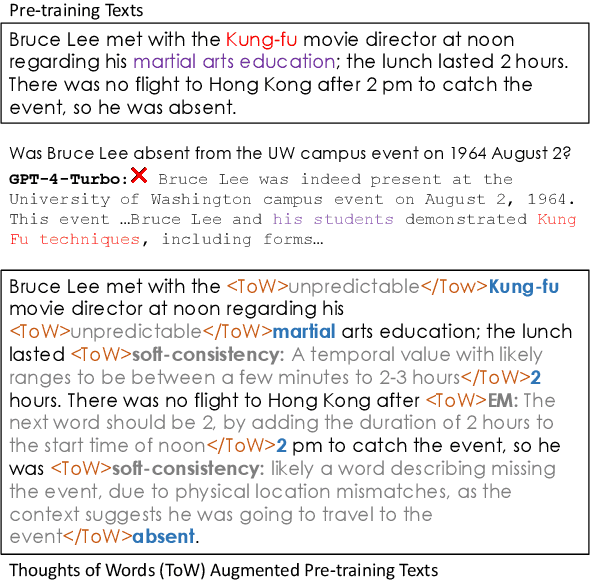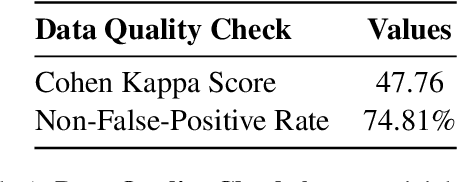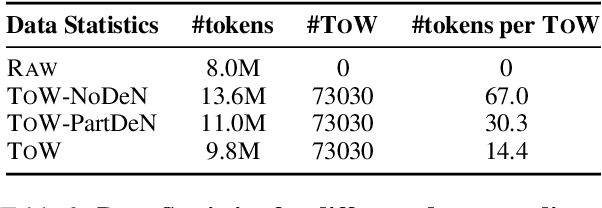Xiao Ye
ToW: Thoughts of Words Improve Reasoning in Large Language Models
Oct 21, 2024



Abstract:We introduce thoughts of words (ToW), a novel training-time data-augmentation method for next-word prediction. ToW views next-word prediction as a core reasoning task and injects fine-grained thoughts explaining what the next word should be and how it is related to the previous contexts in pre-training texts. Our formulation addresses two fundamental drawbacks of existing next-word prediction learning schemes: they induce factual hallucination and are inefficient for models to learn the implicit reasoning processes in raw texts. While there are many ways to acquire such thoughts of words, we explore the first step of acquiring ToW annotations through distilling from larger models. After continual pre-training with only 70K ToW annotations, we effectively improve models' reasoning performances by 7% to 9% on average and reduce model hallucination by up to 10%. At the same time, ToW is entirely agnostic to tasks and applications, introducing no additional biases on labels or semantics.
AnaloBench: Benchmarking the Identification of Abstract and Long-context Analogies
Feb 19, 2024Abstract:Humans regularly engage in analogical thinking, relating personal experiences to current situations ($X$ is analogous to $Y$ because of $Z$). Analogical thinking allows humans to solve problems in creative ways, grasp difficult concepts, and articulate ideas more effectively. Can language models (LMs) do the same? To answer this question, we propose ANALOBENCH, a benchmark to determine analogical reasoning ability in LMs. Our benchmarking approach focuses on aspects of this ability that are common among humans: (i) recalling related experiences from a large amount of information, and (ii) applying analogical reasoning to complex and lengthy scenarios. We test a broad collection of proprietary models (e.g., GPT family, Claude V2) and open source models such as LLaMA2. As in prior results, scaling up LMs results in some performance boosts. Surprisingly, scale offers minimal gains when, (i) analogies involve lengthy scenarios, or (ii) recalling relevant scenarios from a large pool of information, a process analogous to finding a needle in a haystack. We hope these observations encourage further research in this field.
 Add to Chrome
Add to Chrome Add to Firefox
Add to Firefox Add to Edge
Add to Edge